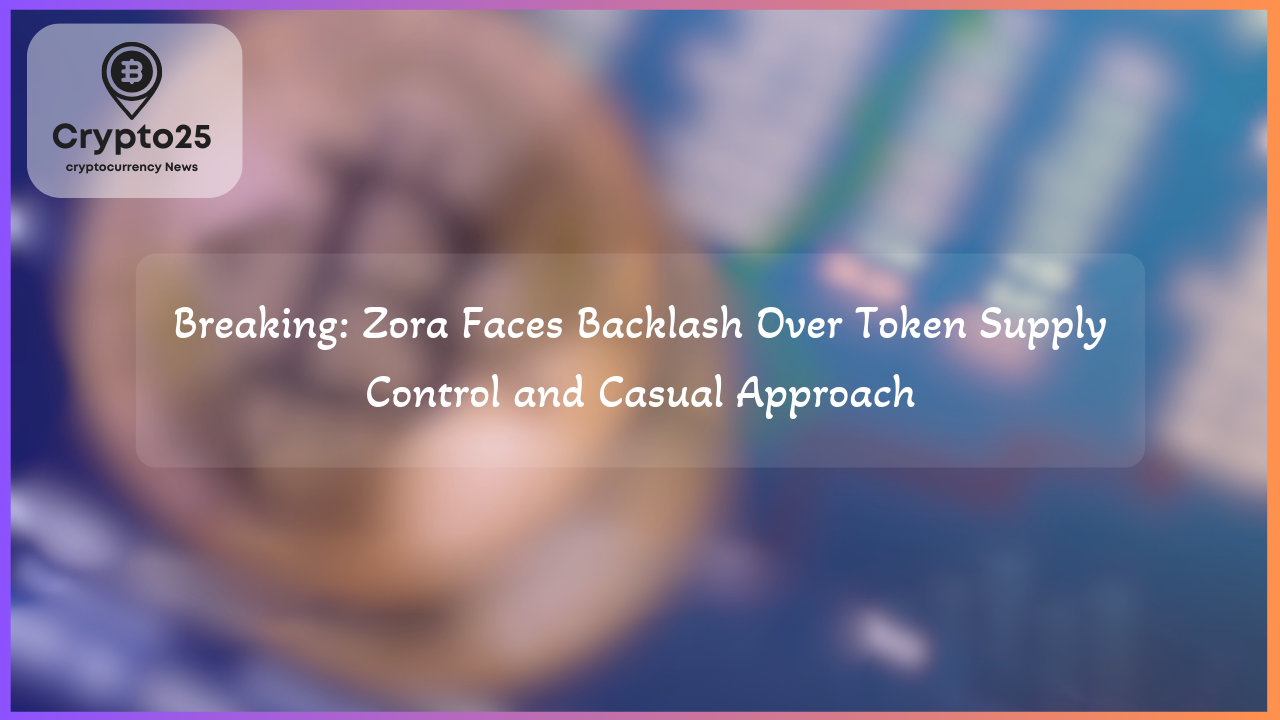
Zora’s recently announced ZORA token has sparked debates in the crypto world due to its unique positioning and allocation strategy. With 65% of its supply reserved for the team, treasury, and early investors, questions about its transparency and purpose have arisen. Despite being officially described as “for fun only,” concerns about its intent and implications on the broader crypto ecosystem persist among both industry insiders and global investors.
### ZORA Token Allocation Raises Concerns Among Industry Experts
Zora has confirmed that its ZORA token will launch with a total supply of 10 billion tokens on the Base blockchain. However, the distribution plan has raised eyebrows, allocating 18.9% of the supply to the development team, 20% to the company’s treasury, and 26.1% to early investors. This distribution means that 65% of the token’s supply will be controlled by internal stakeholders, despite claims that the token lacks material utility. Crypto enthusiasts and critics question its legitimacy, noting that the official documentation explicitly states that ZORA offers no governance rights, equity ownership, or revenue claims for holders.
These concerns were further amplified when an X user named Karbon questioned the legitimacy of ZORA’s approach on April 21. Karbon challenged the concept of directing such a large supply to internal parties for a supposedly “worthless” token, asking why contributors would seek compensation in an asset that publicly declares itself without inherent value. This raises larger questions about tokenomics strategies and their broader implications on transparency and trust in the blockchain space.
| Title | Details |
|---|---|
| Token Supply | 10 Billion |
| Allocation to Team | 18.9% |
| Allocation to Treasury | 20% |
| Allocation to Early Investors | 26.1% |
### The “For Fun Only” Label Sparks Criticism Within the Crypto Space
Zora’s branding of its token as “for fun only” has become a focal point of criticism. Blockchain investigator ZachXBT shared concerns that the very existence of a token without utility could harm the crypto industry’s credibility. He questioned why the platform would raise substantial private funding—reported at $60 million with a $600 million company valuation—only to release a token that regulators and users might interpret as lacking purpose. While the messaging strategy may be intended to shield Zora from legal challenges, critics argue it undermines the legitimacy of tokenized assets.
Legal risk mitigation and expectation management may explain Zora’s positioning, but detractors point to how this characterization affects investor confidence. ZachXBT suggested that if the intention were pure fun, a fair launch model would have been more suitable. Under such a model, the entire supply would have equal access, promoting transparency and removing the potential for insider advantage—a cornerstone principle that appeals to proponents of decentralized finance (DeFi).
### Tokenomics and the Broader Implications for Retail Investors
Industry experts caution that Zora’s tokenomics structure could set a troubling precedent. Kevin Mills, head of research at Triton, underscored the risks associated with releasing a token that offers no intrinsic value yet allocates significant supply to insiders. Mills pointed out that this model encourages speculative investments, as marketing efforts can inflate token prices without providing tangible utility to holders. Critics argue that such practices exploit retail investors who may unknowingly buy into assets with little to no underlying fundamentals.
Recent discourse surrounding ZORA has also emphasized the potential for misleading narratives in the crypto sector. As new tokens emerge in the market, transparency and accountability remain vital to fostering long-term trust. The allocation choices made by Zora underscore the need for consumers and regulators to critically assess token distribution models, especially when substantial portions of the supply benefit internal stakeholders over community-driven initiatives.
### Transparency and Trust in Cryptocurrency Projects
Zora’s debut has ignited an essential debate about tokenomics and brand positioning in the evolving crypto landscape. With the ecosystem striving for increased adoption and regulatory clarity, projects like ZORA are scrutinized for their long-term impact on fostering trust in blockchain solutions. While its “for fun only” label seeks to differentiate it from other assets, critics believe this narrative weakens the perception of value-driven blockchain innovations.
The path forward for Zora hinges on restoring credibility through transparent communication and addressing concerns over its token distribution strategy. Whether the crypto community embraces ZORA or views it as a warning against poorly structured token releases, the insights gleaned from this project will likely shape conversations around tokenomics for years to come.
